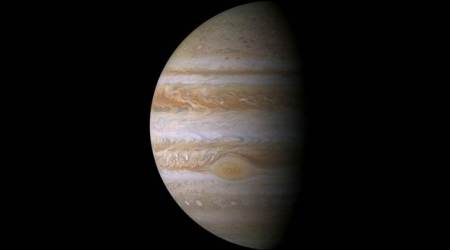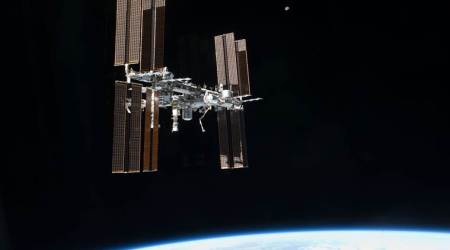 The illustration explains why the reported sizes of some exoplanets may need to be revised in cases where there is a second star in the system. (Source: NASA)
The illustration explains why the reported sizes of some exoplanets may need to be revised in cases where there is a second star in the system. (Source: NASA)
Researchers have found that hidden stars may make planets appear smaller than they actually are, complicating the search for Earth-like planets. In the search for planets similar to our own, an important point of comparison is the planet’s density. A low density tells scientists a planet is more likely to be gaseous like Jupiter, and a high density is associated with rocky planets like Earth.
But the new study, to be published in a forthcoming issue of the Astronomical Journal, suggests that some planets are less dense than previously thought because of a second, hidden star in their systems. As telescopes stare at particular patches of sky, they cannot always differentiate between one star and two.
A system of two closely orbiting stars may appear in images as a single point of light, even from sophisticated observatories such as NASA’s Kepler space telescope.This can have significant consequences for determining the size of planets that orbit just one of these stars.
“Our understanding of how many planets are small like Earth, and how many are big like Jupiter, may change as we gain more information about the stars they orbit,” said one of the study authors Elise Furlan of the Infrared Processing and Analysis Center (IPAC) at California Institute of Technology (Caltech).
“You really have to know the star well to get a good handle on the properties of its planets,” Furlan added.
In the new study, Furlan and Steve Howell at NASA’s Ames Research Center in California’s Silicon Valley focused on 50 planets in the Kepler observatory’s field of view whose masses and radii were previously estimated.
The effect of companion stars is important for scientists characterising planets discovered by Kepler, which has found thousands of exoplanets — planets outside our solar system.
“Correct planet sizes and densities are critical for future observations of high-value planets by NASA’s James Webb Space Telescope. In the big picture, knowing which planets are small and rocky will help us understand how likely we are to find planets the size of our own elsewhere in the galaxy,” Howell said.

